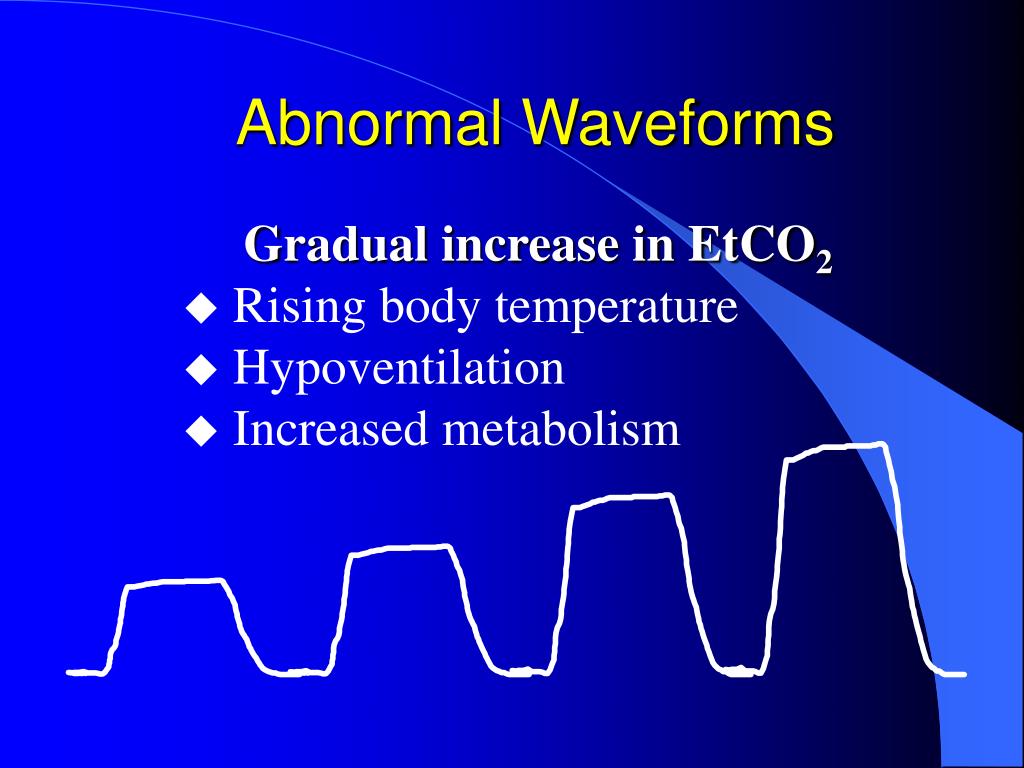

Once expiration begins to occur, the lung volume decreases as air is forced out the respiratory tract. As the alveoli are filled with this new gas, the concentration of COĢ that fills the alveoli is dependent on the ventilation of the alveoli and the perfusion (blood flow) that is delivering the COĢ for exchange.

At the beginning of inspiration, the lungs expand and COĢ free gasses fill the lungs. ĭuring the normal cycle of respiration, a single breath can be divided into two phases: inspiration and expiration. Capnography measures the elimination of COĢ which may be of greater clinical usefulness than oxygenation status. Oxygenation (typically measured via pulse oximetry) measures the latter portion of this system. The process of respiration can be divided into two main functions: elimination of COĢ waste and replenishing tissues with fresh OĢ. Ventilation refers to the mechanical process of which the lungs expand and exchange volumes of gasses, however respiration further describes the exchange of gasses (mainly COĢ) at the level of the alveoli. Oxygenation and capnography, although related, remain distinct elements in the physiology of respiration. In the presence of most forms of lung disease, and some forms of congenital heart disease (the cyanotic lesions) the difference between arterial blood and expired gas increases which can be an indication of new pathology or change in the cardiovascular-ventilation system. In healthy individuals, the difference between arterial blood and expired gas COĢ partial pressures is very small (normal difference 4-5 mmHg). The capnogram is a direct monitor of the inhaled and exhaled concentration or partial pressure of COĢ partial pressure in the arterial blood.

When the measurement is taken at the end of a breath (exhaling), it is called "end tidal" CO The plot may also show the inspired COĢ, which is of interest when rebreathing systems are being used. It is usually presented as a graph of COĢ (measured in kilopascals, "kPa" or millimeters of mercury, "mmHg") plotted against time, or, less commonly, but more usefully, expired volume (known as volumetric capnography). Its main development has been as a monitoring tool for use during anesthesia and intensive care. Capnography is the monitoring of the concentration or partial pressure of carbon dioxide ( COĢ) in the respiratory gases.


 0 kommentar(er)
0 kommentar(er)
